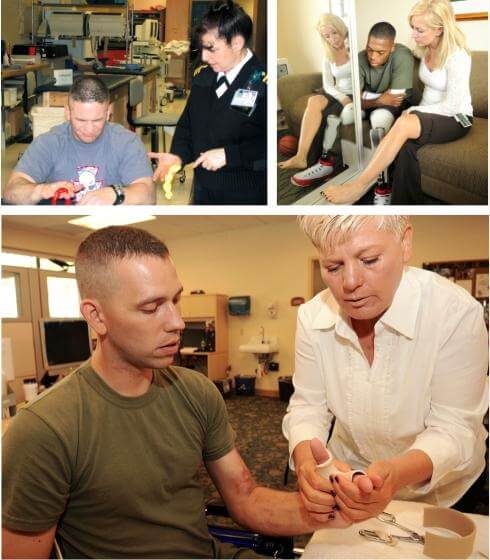What is the full form of OT
OT: Occupational Therapy
OT stands for Occupational Therapy. It is a profession practised by many throughout the world. Occupational Therapy includes various assessments and ways to bring conclusions to develop, maintain or recover many meaningful activities. This profession is often segregated as an allied health profession, but it was initially independent. It consists of Occupational Therapy Assistants (OTA). Usually, people with disabilities, mental health problems, injuries or impairments are treated by OT.

The definition of Occupational Therapy given by the American Occupational Therapy Association is as follows: - The one who "helps people across their lifespan participate in the things they want and need to do through the therapeutic use of everyday activities (occupations)". Some of the common interventions include:-
- Independent mobility is the primary concern, initiated by helping small kids with a disability participate in social situations and school.
- Helping in taking rehab from injuries
- Assisting the ageing public through physical and cognitive changes
- They are alleviating the risk of pressure injury by providing the independent functioning ability to assess assistive seating options.
Education of the Occupational Therapist
Worldwide various countries have decided on various educational qualifications required to work as an Occupational Therapist or Occupational Therapy Assistant. However, minimum standards for the education of OTs throughout the world are set by the World Federation of Occupational Therapists (WFOT). It was revised in 2016. The education programs for OTs throughout the world should meet these standards. As part of the study curriculum, the agenda must include fieldwork, such as acute care, outpatient hospital, schools, home health, skilled nursing facilities, community settings, early interventions, group homes, and inpatient hospitals.
This profession is generally theoretical and evidence-based. And hence their curriculum has a dedicated theoretical basis of occupation through anatomy, occupational science, physiology, neurology and biomechanics, along with information from sociology, psychology and more. Some countries also require a license to work as an Occupational therapist, and consent is generally obtained by passing a national licensing exam.
Arenas where Occupational Therapy is practised

There are various sectors where OT is practised. Hence it gets complicated to categorize it. Mainly due to the different health care systems practised throughout the world. Here we look at the American Occupational Therapy Association categorization:-
- Children and youth: Here, the OTs work with the children, kids, toddlers and sometimes their families too at the clinics, homes, schools, hospitals, etc. Here they mediate in the performance of feeding, daily living, playing, attending school, and socializing of the young kid. They consider the child's strengths and weaknesses from his acquired skills, whether cognitive, emotional or physical, and plan the treatment along with suggestions and collab from the parents, teachers, or the young person themselves.
- Health and Wellness: The OTs do their job in this sector by identifying the obstacles to wellness and health by observing and analyzing the patient's role, environment, routine, and occupation. The therapy intervention, however, varies as per the setting, such as in School, Outpatient, Acute Care, and Community-based.
- Mental Health: A person needs the help of Occupational Therapy when they are experiencing any mental health needs, for example, if in depression, anxiety, insomnia, demotivated, introversion, and others. The Occupational Therapist can promote mental health through the use of various techniques. The three significant levels of service are as follows:-
- Tier 3: intensive interventions
- Tier 2: targeted services
- Tier 1: universal services
- Productive Aging: In this, the Occupational Therapists work with the elderly citizens to help maintain their independence, mobility, participation and life fulfilment.
- Geriatrics or Productive Aging: Here, they work with people to look over the aspects of Aging, promote health and treat various diseases.
- Visual Impairment: In this sector, the occupational therapist works with the specialist to maximize the independence of those with visual Impairment.
- Adult Rehabilitation: Here, they look after the rehabilitation process after an injury or Impairment.
- Assistive Technology: Here, Occupational Therapists promote, recommend and educate people about the need to use assistive technology to improve their quality of life.
- Travel Occupational Therapy: Here, Occupational Therapy practitioners prefer travelling to work. They work in varying setups.
- Occupational Justice: This arena concerns the benefits and harms related to participating in occupations and the other side-lying effects of access or denial of opportunities.
- Occupational Injustice: Here, everything concerning deprivation, exclusion or denial of opportunity to people. Types of Occupational Injustice are as follows:
- Occupational deprivation
- Occupational apartheid
- Occupational marginalization
- Occupational Imbalance
- Occupational alienation
|


 For Videos Join Our Youtube Channel: Join Now
For Videos Join Our Youtube Channel: Join Now










